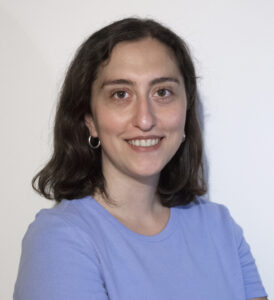Researcher: Javier Martinez Gil
Researcher CV: Javier Martinez Gil received the undergraduate degree in telecommunication engineering by Universidad Miguel Hernández de Elche (UMH), Spain and the Master degree in telecommunication engineering also by Universidad Miguel Hernández de Elche (UMH) in Spain.
He attended two internships, one in the department of communication engineering (2019 and 2020) and one intership at KTH Royal Institute of Technology (August 2019) in Sweden.
He has already published two manuscripts: J. Martínez, Á. Coves, E. Bronchalo, Á.A. San Blas, M. Bozzi, Band-pass filters based on periodic structures in SIW technology. Int. J. Electron. Commun. (AEÜ) 112 (2019) 152942.
Javier Martínez, Angela Coves, Francisco Mesa, Oscar Quevedo-Teruel. Passband broadening of sub-wavelength resonator-based glide-symmetric SIW filters. Int. J. Electron. Commun. (AEÜ) 125 (2020) 153362. Furthermore, he was the winner of the Student Design Competition at the European Microwave Week 2018 and also presented an article at URSI 2019.
Research objectives: The purpose of this research is to study optical mediated THz mixers and detectors.
Expected results: The vision of this research work is to enable monolithic integration of a low-barrier diode mixers and high power photodiodes as LO pump source. The aim is to pump a low-barrier diode mixer with a THz LO signal generated by optical heterodyning in a high-power wideband THz photodiode. The research will contribute to the fundamental research challenge of optically mediated THz mixing and detection. Optical heterodyne LO signal generation has been demonstrated with lower phase noise and a much wider tuning bandwidth as compared to electrical approaches. The integration of a low-barrier mixing diode and a high-power frequency-tunable photodiode would thus enable an ultra-wideband THz mixer for the first time. The research work will provide key metrics such as NEP, noise figure, conversion efficiency of such an approach (optically pumped THz mixers) and it will analyse the applicability of such a device for applications including the development of a future ultra-broadband (DC to THz) network analyser (NWA) and THz spectroscopy. The methodology of the proposed novel approach is to substantially reduce LO power requirements by using low-barrier diode mixers and to provide a frequency-tunable (DC – 1 THz) low-phase noise LO signal generated by an InP UTC photodiode or photodiode array. The research work will also address the monolithic integration of on-chip planar THz antennas with the mixer diodes to allow coupling of the THz signal and the LO signal. This research will contribute to answering TERAOPTICS’ research Challenge III and V.
Planned secondment(s):
- to UDE (Prof. Stöhr), M12 for ~2 months for designing an integrated mixer with optical LO.
- to UC3M (Prof. Guillermo Carpintero), M16 for ~ 1 month, for broadband antenna integration
- to MWP (Mr. Rymanov), M28 for ~1 months for testing the developed optically mediated mixers




